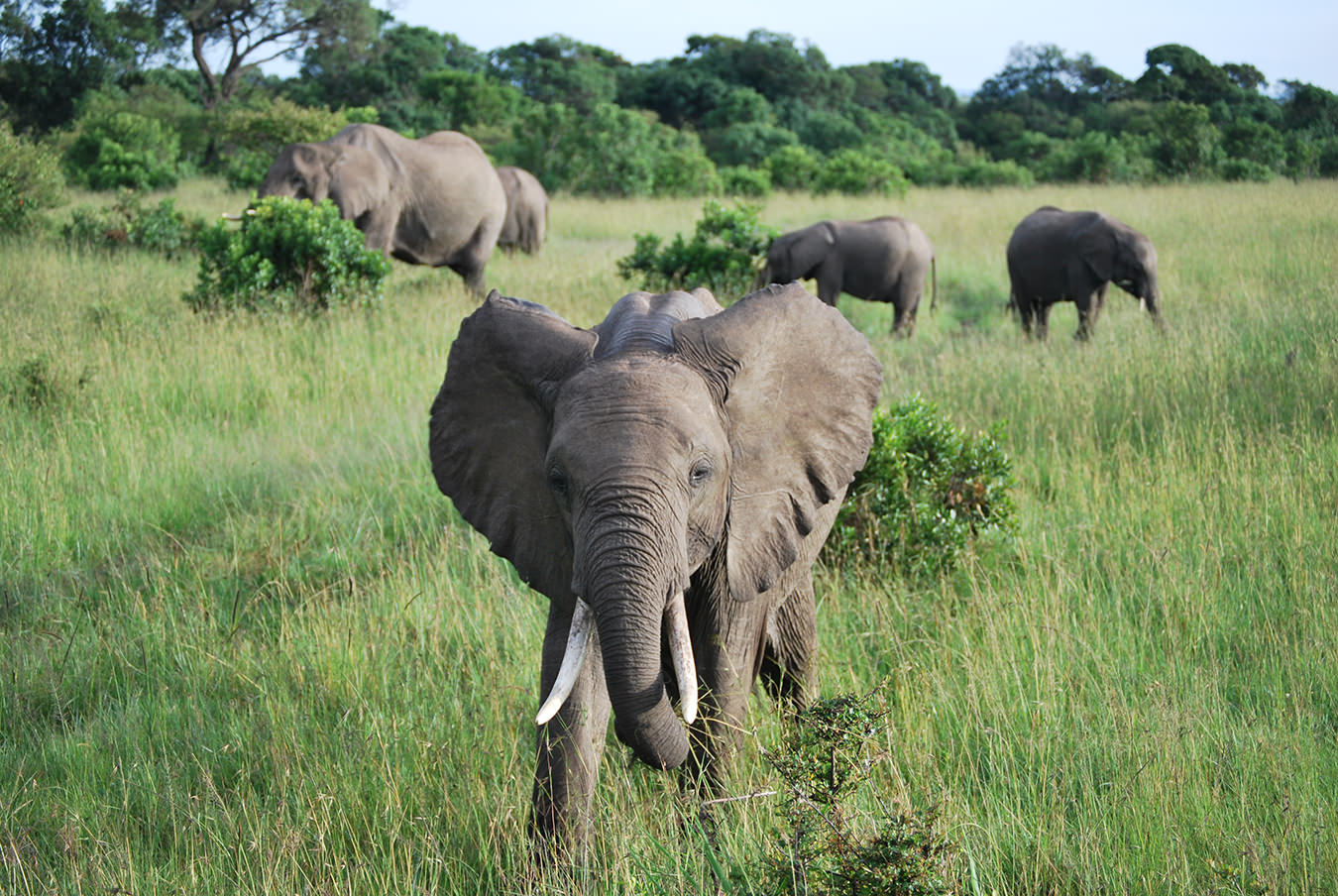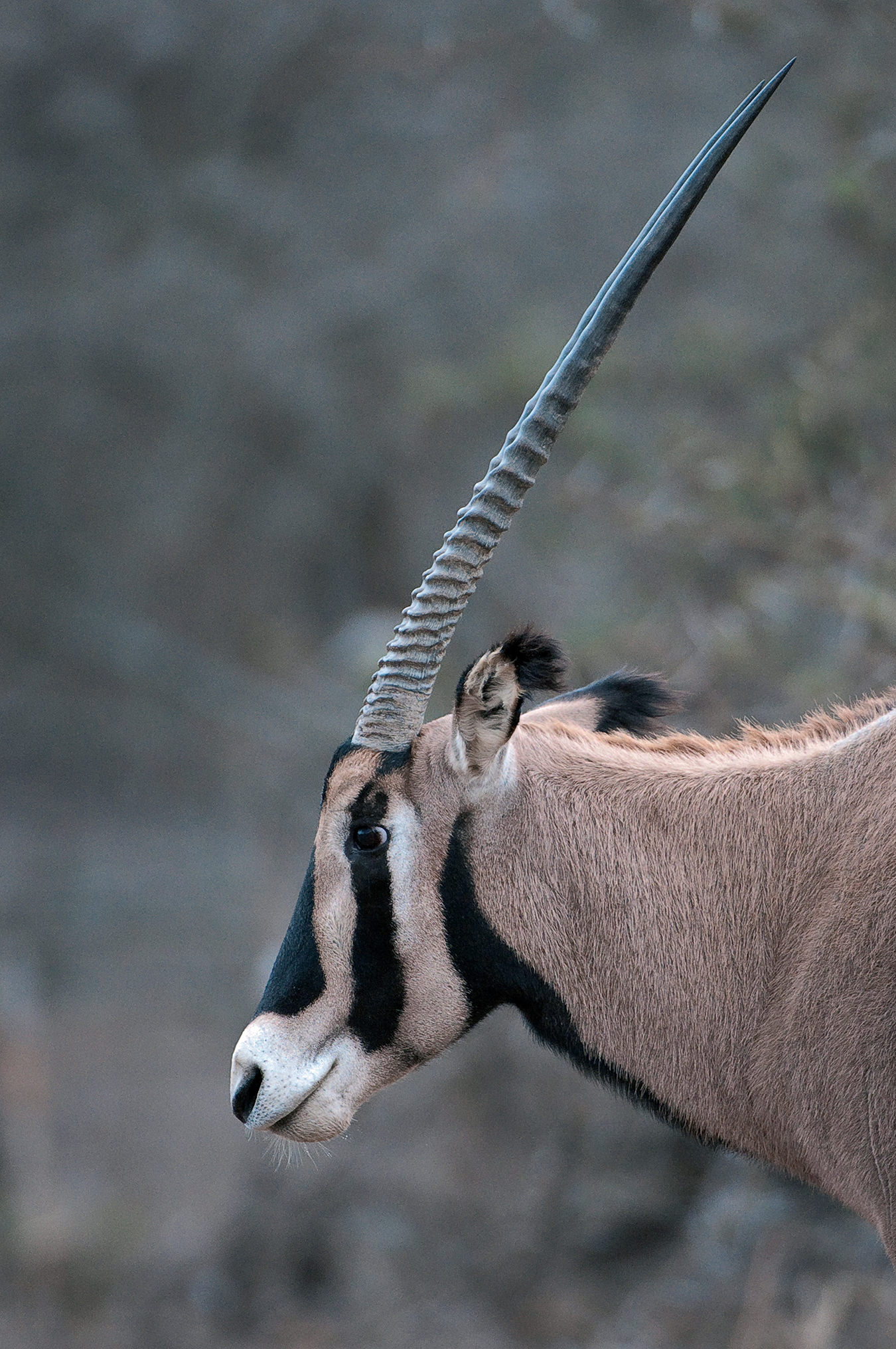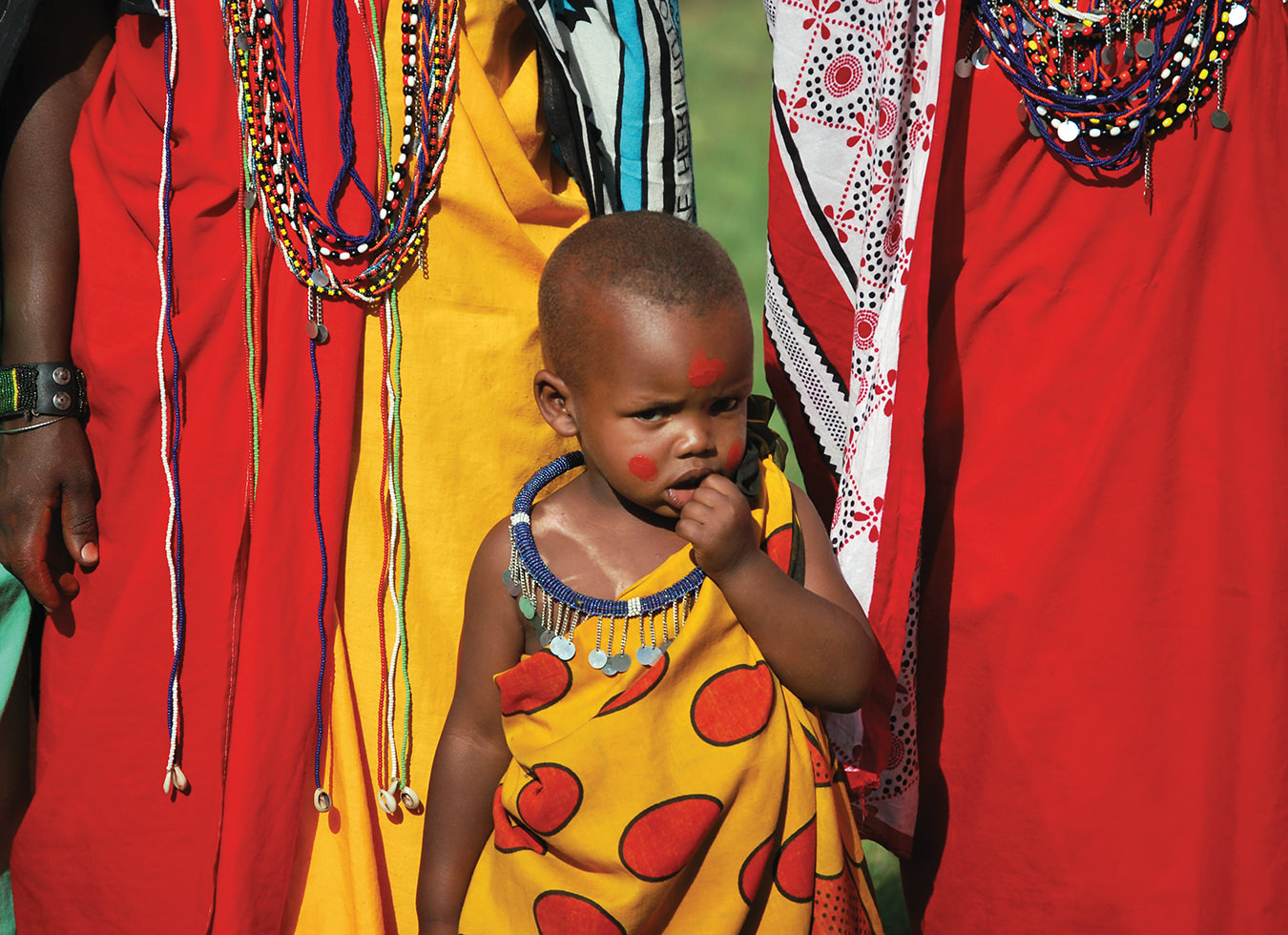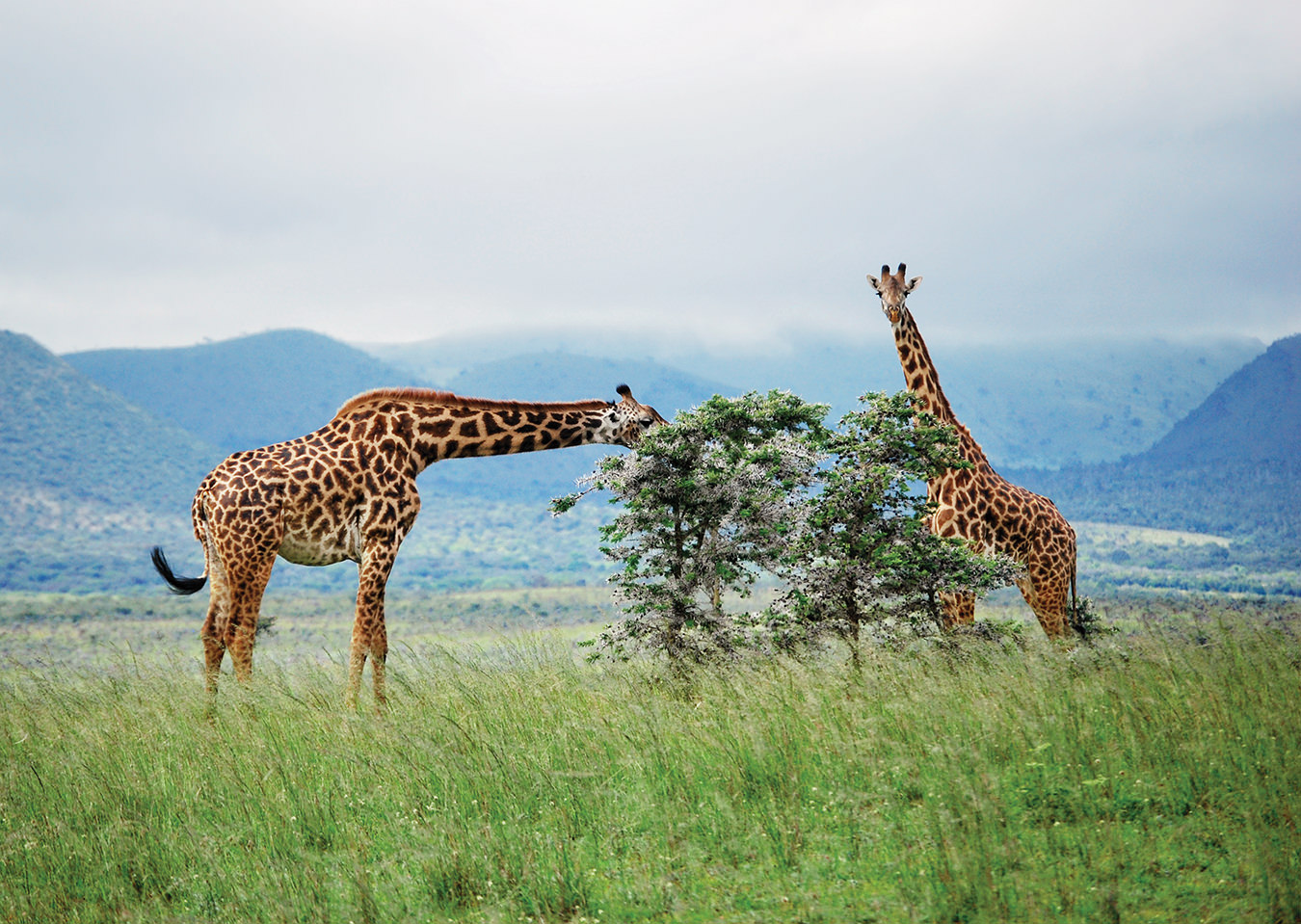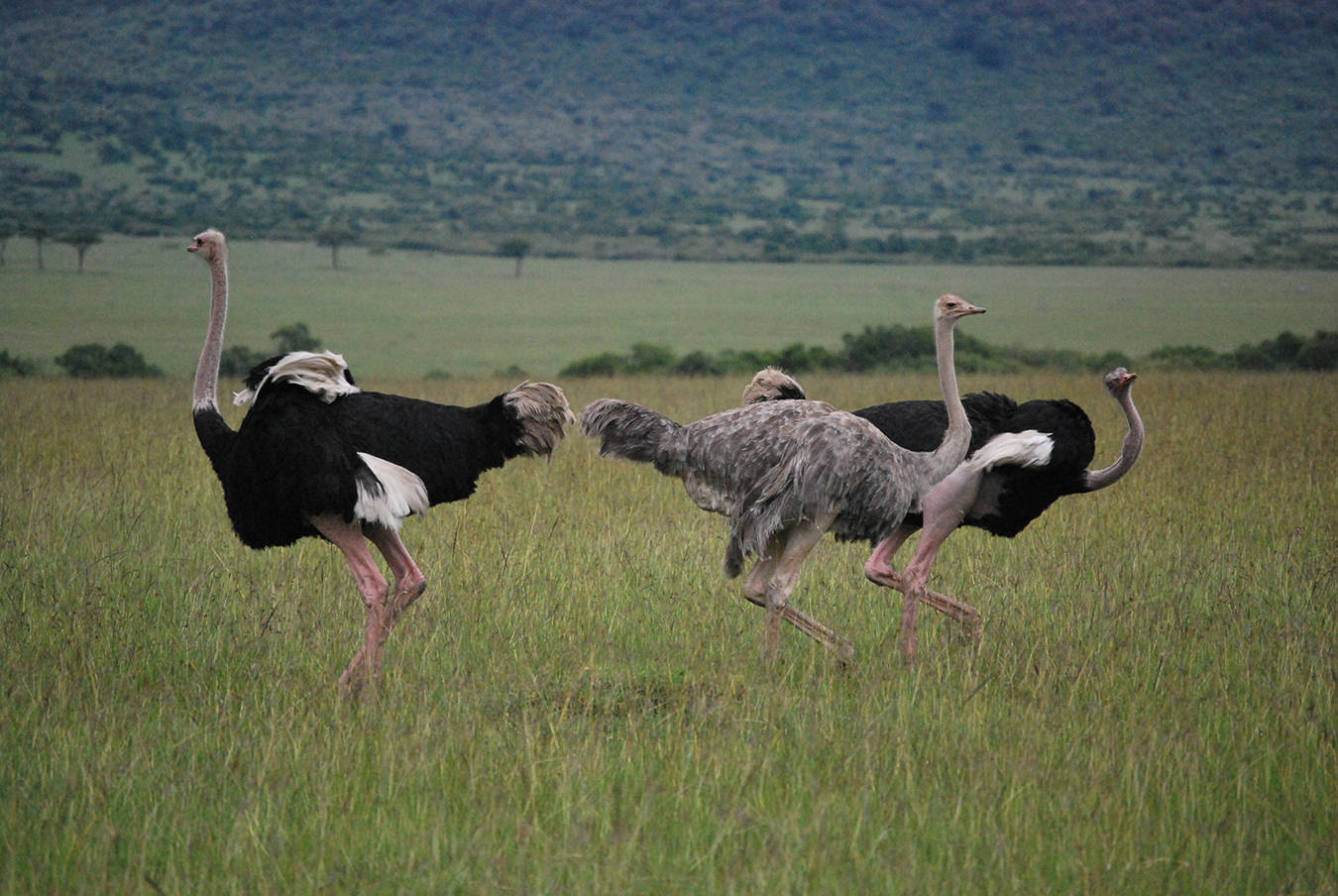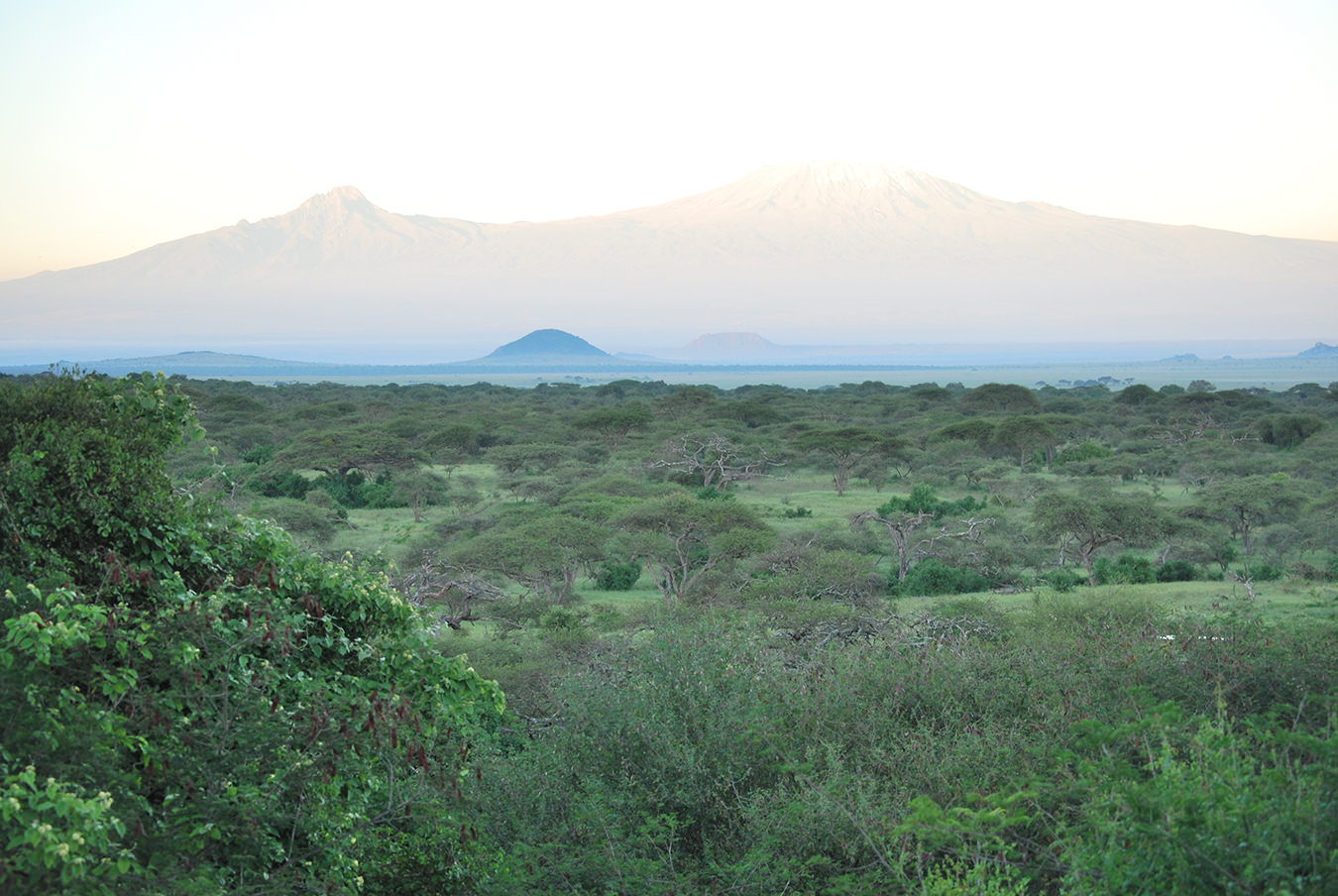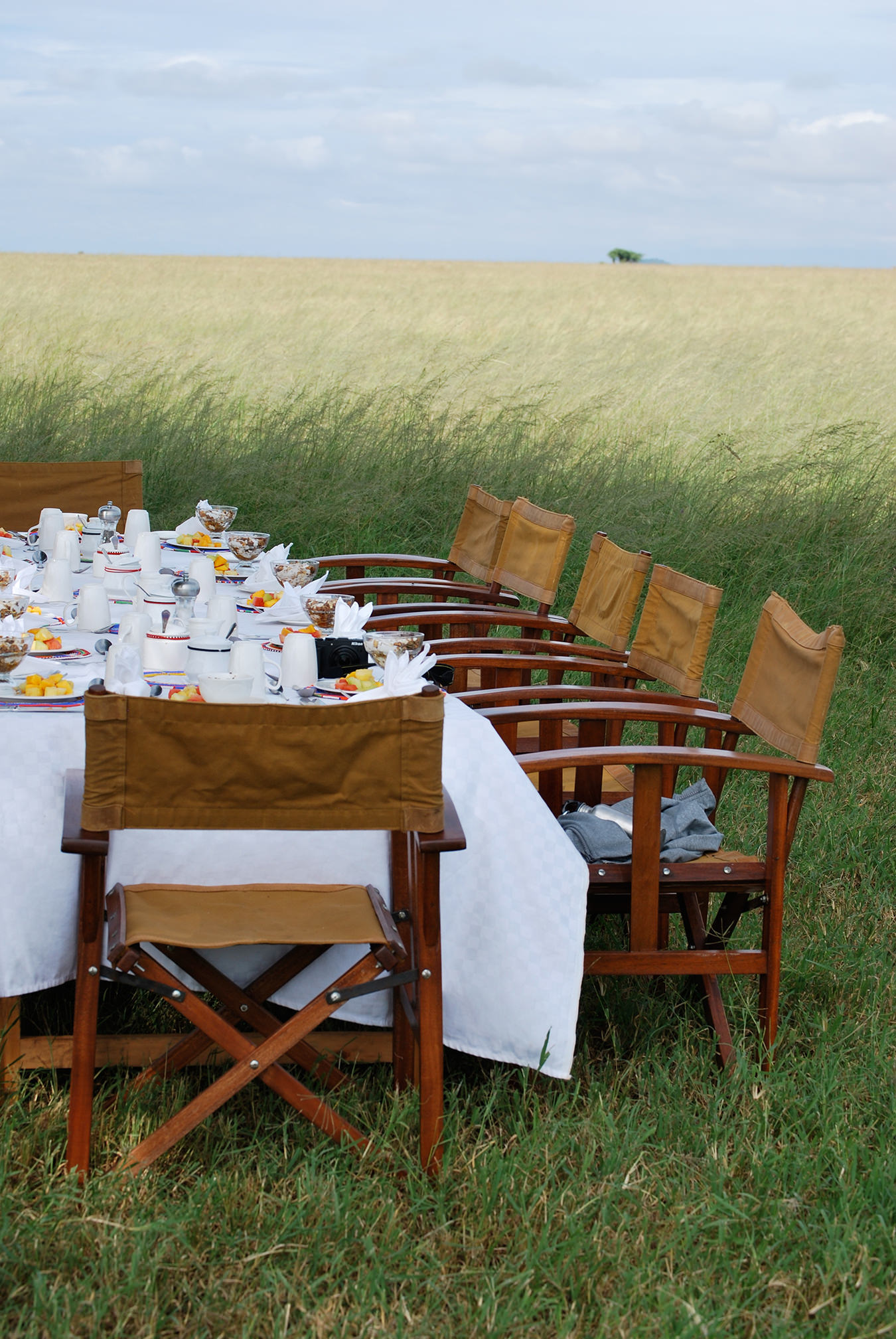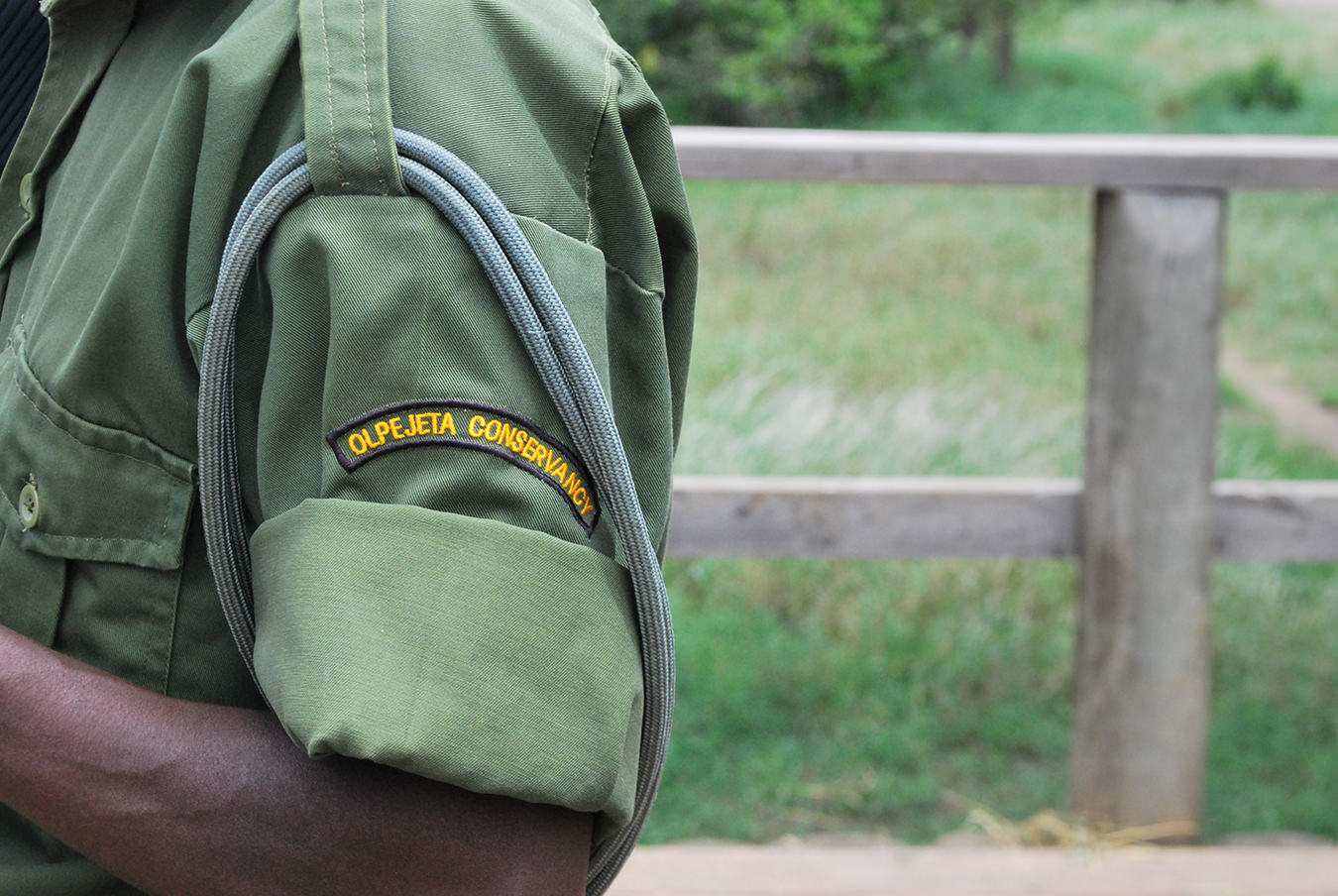It was Kenyan paleoanthropologists Louis and Mary Leakey who pioneered the archeological exploration of their country’s lush Great Rift Valley. Their 2.5-million-year-old skeletal discoveries in Kenya and Tanzania were evidence that this expanse could well have been the cradle of mankind, and the very origin of us all. Perhaps it is genetic memory, then, that explains the primal connection felt by numerous travellers to Kenya; many speak of perceiving this link while disembarking at Nairobi’s Jomo Kenyatta International Airport for the first time into the thick East African air. Perhaps it’s more romanticized references, like the prose of Ernest Hemingway, the words of Karen Blixen’s Out of Africa, or the photographs in National Geographic that contribute to the mystique. For me, it’s very much a genealogical homecoming, though far more recent than prehistoric.
“Your mother is from Kenya?” asks the driver of my car as we leave the airport, crawling through the snarled Nairobi traffic. “Then this really is your motherland.” I’ve never felt like a tourist here because my mother was born and raised in Rumuruti, in Kenya’s north. But after first visiting at the age of five and returning seven times, the sense of exoticism is still never lost on me. Though troubles have struck the nation in recent years, the warm earth, resilient people, and wildlife will be forever Kenya, and should be forever visited.
This time, I’m returning to the country’s ultimate safari grounds, the Maasai Mara National Reserve, and taking on new territory in the Chyulu Hills National Park, a conservancy operated by Kenya Wildlife Services. Sandwiched between two national parks, Amboseli and Tsavo, the semi-remote Chyulus encompass hundreds of small green peaks along with craters that hint at the terrain’s volcanic past. It was said to have been the inspiration for Hemingway’s Green Hills of Africa, and its relatively young 500-year-old mountain range played a background role on the silver screen in Out of Africa. The snow-dusted crown of Mount Kilimanjaro, the world’s tallest free-standing mountain, is just over 60 kilometres away and has a habit of striking out of the hazy distance when least expected.
The Chyulus are a 45-minute flight from Nairobi, and awaiting my small plane’s arrival at the dirt airstrip in a forest-green Land Cruiser is our guide, Jonathan Konee, at the wheel. My group and I depart for ol Donyo Lodge, lumbering along a dirt road and into the bush as our light aircraft drones off in the distance. It’s not long before Jonathan spots a reticulated pelt behind a whistling acacia tree that could only belong to a giraffe; two, three, and four more follow, walking elegantly in single file. Unperturbed by the snapping of our camera shutters, the “journey” (a group of giraffes) lopes unhurriedly along with necks bobbing in slow-motion nods—we’re captivated. An airstrip transfer takes on new meaning in Kenya: we’re already on the first of many game drives.
The small green peaks and volcanic craters of the Chyulu Hills were said to have been the inspiration for Hemingway’s Green Hills of Africa.
A room of natural acacia wood adorned with hollow ostrich-egg chandeliers and bookshelves welcomes us to ol Donyo, as do Ray and Alyssa Wyatt, the indefatigable hosts (he’s a Brit, she’s American) who have managed the property since January 2013. Kenyan Richard Bonham founded ol Donyo in the heart of the 111,289-hectare Maasai-owned Mbirikani Group Ranch in 1986, and the lodge is presided over by the Great Plains Conservation, owned by National Geographic photographer couple Dereck and Beverly Joubert. As Kenya’s only Relais & Châteaux property, ol Donyo consists of just 10 rooms that sleep no more than 23 people with ample space. Private villas are appointed with deep bathtubs, floor-to-ceiling windows (or simply open air), and enormous carved-wood four-poster beds. Some include private pools, while others are equipped with outdoor beds that can be prepared with mosquito nets for a night under the stars.
Most lodgers choose to finish their Kenyan vacation here in remote relaxation, and there are few other safari vehicles to be seen in the surroundings. “You can’t really call this a true safari lodge,” says Ray, “because we’re not as big on the game as some of the others.” But game there is, and it’s easy to lose an afternoon spotting zebras with binoculars in hand, scanning the savannah from east to west from ol Donyo’s regal hillside plot, or watching Thomson’s gazelles drink from nearby waterholes. One fellow lodge guest, Ann C. Smith from Jackson Hole, Wyoming, first came to Kenya in 1988 and has since returned over a dozen times. When asked what first brought her here, she smiles. “I saw Out of Africa. Then I went to Banana Republic, bought all the gear, and got on a plane.” The magic on the ground, coupled with an interest in conservation, is what has kept her coming back.
Wildlife protection is something that ol Donyo’s founder knows much about; Bonham acts as the director of operations at the Big Life Foundation, a non-profit organization founded in 2010 by wildlife photographer Nick Brandt that employs local rangers, funds incentives for tips about poachers, and compensates farmers whose cattle are killed by lions. Poaching reports out of Kenya are, tragically, continuous. Mere weeks before my visit there were 12 elephants taken in Tsavo, and this past June the country lost Satao, its largest elephant, to poachers. (The demand for illegal tusks sees nearly 35,000 elephants killed annually on the African continent, and the ivory can sell for $3,000 per kilogram.)
Not far off, in Laikipia County, the Ol Pejeta Conservancy tracks precious black and white rhinoceroses with transmitters; their horns can be worth as much as gold dust on the black market. Still, the call to action is global and the conservation efforts are vehemently backed by Kenyans and the government, so philanthropists and non-profits continue their fight.
I’m up at dawn to capture some of these creatures in my zoom lens before the day heats up and they disappear into shade. Instead of a traditional game drive, the choices for a morning’s exploration are to travel on horseback, or, my preference, on foot with two armed guards, which is only permitted in certain parks. The Chyulus are naturally flush with foliage year-round if there is no drought, and at a strolling pace we take the time to smell and touch wild orchids and acacias, as well as to chew fibrous branches of the Salvadora persica (“toothbrush tree”) used by the Maasai to clean their enviously white teeth.
Safari means “journey” in Swahili and the element of chance is intoxicating—the possibility of seeing nothing makes it all the more exciting when you do catch sight of big game. Grass brushes my bare ankles, and a coal-black butterfly flutters by before a creature of a different gait appears in the clearing: a female elephant with a baby by her side, its tiny ears and trunk flapping away flies. There is no Land Cruiser separating me from the first Big Five sighting of the trip (the quintet of Cape buffalo, lion, leopard, rhino, and elephant). Weighing close to 2,000 kilograms, she could charge us at a speed of 40 kilometres per hour, but instead she strolls her majestic heftiness slowly by as our guides—now our guardians—flash a thumbs-up sign.
On we walk through the bush, passing scattered wildlife, until over a bluff is a jarring yet welcome sight of civilization: a white-linened table set with Maasai-beaded napkin rings and fruit juice, yogurt, made-to-order eggs, and bacon served up under the umbrella of an acacia tree.
The naked eye plays many cruel tricks on safari. A boulder can transform into a grazing rhino as quickly as a prowling lion becomes a flush of tawny grass.
After three days at ol Donyo my only regret is that I didn’t make time for a run on the plains, something that is forbidden in more animal-populated areas, such as my next destination, the Maasai Mara.
My haven here is the Fairmont Mara Safari Club tented camp, positioned above the quick-flowing chocolate milk–coloured Mara River that’s often dotted with the beady eyes of hippos. The Fairmont group purchased a block of three Kenyan properties in 2005, and as a front-desk employee explains, “the Fairmont Norfolk in Nairobi is very much for the city; the Fairmont Mount Kenya Safari Club is for the mountain; and here in the Mara it’s all about the Big Five.” When the original Mara lodge reopened as the Fairmont, the prior resort staff stayed on, retaining all of their intricate knowledge for the land on which some have worked, and lived, for more than 20 years.
Early one morning before our 6:30 a.m. game drive, I’m awoken by something flinging itself at my tent. “A cheeky baboon, maybe?” a staff member offers, but I never do find out the origins of my wild new alarm clock.
Settling into the rhythm of the road again, this time in fresh terrain, our guide lends context to our surroundings. Few drivers of safari vehicles are just drivers; they are master game-spotters, flora and fauna specialists, and automobile manoeuvre experts who must be able to tackle washed-out roads and patches of “black cotton” mud. (Paved roads are prohibited in game parks because they disturb natural animal patterns.)
A good guide has a few stellar stories about each species, and also knows them intuitively well, pointing out how elephants put their trunks to their tusks when mad; that warthogs have such a short memory span they sometimes forget where they are running; that hippos create their own form of sunscreen; and that the giant eland, the world’s largest antelope, can jump to a height of 10 feet. And on this drive, ours knows that there are three lion prides in the area but gives no guarantees that we will see any of them.
Scanning the savannah inch by inch becomes second nature on a game drive. Like an M. C. Escher sketch metamorphosing from one subject to another, a boulder grounded in a patch of foliage can transform into a grazing rhino as quickly as a prowling lion becomes a flush of tawny grass. The naked eye plays many cruel tricks on safari.
How sweet it is, then, to drive by 13 lions feasting on a Cape buffalo in the afternoon heat. Flies swarm as they lick their chops, and though there are five fluffy cubs present, the scene is far wilder than any postcard image. (I’m taken back to my first safari memory, when my five-year-old self watched a warthog taken down by a lion a few metres away from our car; nature at work is not always pretty, of course, but therein lies a kind of beauty.) That evening at dinner a companion discovers that he snapped no less than 674 lion photos.
Before departing Kenya, I detour to the Karen Blixen Museum in the Karen suburb of Nairobi. For 17 years the Danish author of Out of Africa, whose pen name was Isak Dinesen, lived in a bungalow here, and outlived a love; she left in 1931. When Kenya gained independence from Britain in 1963, the home was gifted to the government and reopened as a museum in 1985. It underwent major renovations last year, restoring the rooms to how they were in Blixen’s time. All of the Out of Africa movie props are also being removed and, soon, only her original furnishings and possessions will remain.
The property’s bougainvillea and African tulips have a link to the past, too. More than a century old, they would have grown during Blixen’s time and led her home down the red-earth driveway. Even with my personal memories cast aside, it would be impossible to not feel a connection to the writer’s adopted land, especially while gazing up from the lawn at the knuckled, far-off range of the Ngong Hills.


